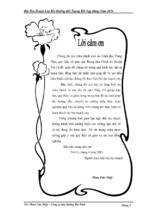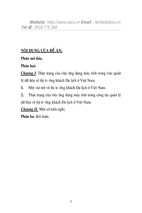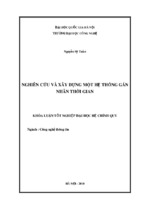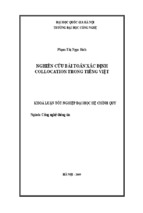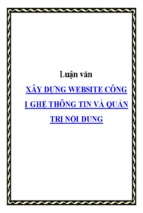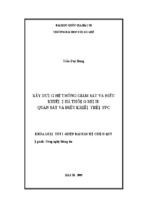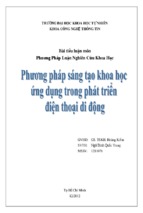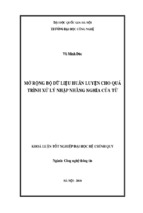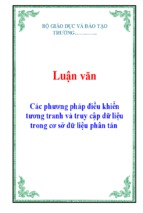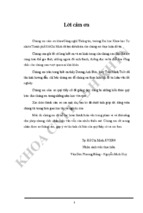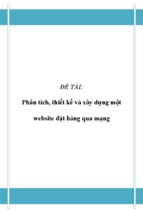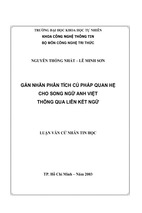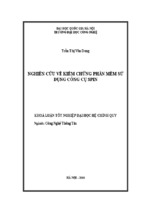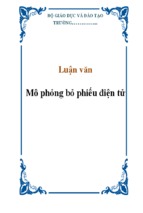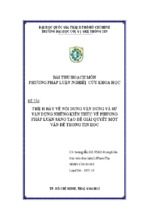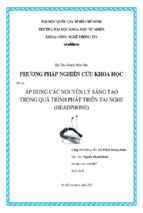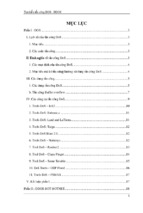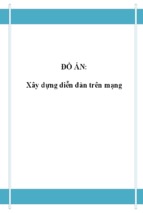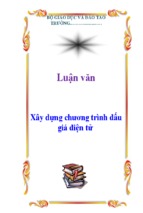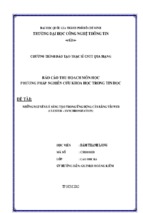Advanced Host Intrusion Prevention
with CSA
Chad Sullivan, CCIE No. 6394
Paul Mauvais
Jeff Asher
Cisco Press
800 East 96th Street
Indianapolis, IN 46290 USA
Advanced Host Intrusion Prevention with CSA
Chad Sullivan
Paul Mauvais
Jeff Asher
Copyright© 2006 Cisco Systems, Inc.
Cisco Press logo is a trademark of Cisco Systems, Inc.
Published by:
Cisco Press
800 East 96th Street
Indianapolis, IN 46240 USA
All rights reserved. No part of this book may be reproduced or transmitted in any form or by any means, electronic
or mechanical, including photocopying, recording, or by any information storage and retrieval system, without written permission from the publisher, except for the inclusion of brief quotations in a review.
Printed in the United States of America 1 2 3 4 5 6 7 8 9 0
First Printing May 2006
Library of Congress Cataloging-in-Publication Number: 2005931071
ISBN: 1-58705-252-0
Warning and Disclaimer
This book is designed to provide information about the Cisco Security Agent product from Cisco Systems, Inc.
Every effort has been made to make this book as complete and as accurate as possible, but no warranty or fitness is
implied.
The information is provided on an “as is” basis. The authors, Cisco Press, and Cisco Systems, Inc. shall have neither
liability nor responsibility to any person or entity with respect to any loss or damages arising from the information
contained in this book or from the use of the discs or programs that may accompany it.
The opinions expressed in this book belong to the author and are not necessarily those of Cisco Systems, Inc.
Trademark Acknowledgments
All terms mentioned in this book that are known to be trademarks or service marks have been appropriately capitalized. Cisco Press or Cisco Systems, Inc. cannot attest to the accuracy of this information. Use of a term in this book
should not be regarded as affecting the validity of any trademark or service mark.
Corporate and Government Sales
Cisco Press offers excellent discounts on this book when ordered in quantity for bulk purchases or special sales. For
more information, please contact: U.S. Corporate and Government Sales 1-800-382-3419
[email protected]
For sales outside the U.S., please contact: International Sales
[email protected]
Feedback Information
At Cisco Press, our goal is to create in-depth technical books of the highest quality and value. Each book is crafted
with care and precision, undergoing rigorous development that involves the unique expertise of members from the
professional technical community.
Readers’ feedback is a natural continuation of this process. If you have any comments regarding how we could
improve the quality of this book, or otherwise alter it to better suit your needs, you can contact us through email at
[email protected]. Please make sure to include the book title and ISBN in your message.
We greatly appreciate your assistance.
Publisher
Editor-in-Chief
Executive Editor
Cisco Representative
Cisco Press Program Manager
Production Manager
Development Editor
Project Editor and Copy Editor
Technical Editors
Editorial Assistant
Book and Cover Designer
Compositor
Indexer
John Wait
John Kane
Brett Bartow
Anthony Wolfenden
Jeff Brady
Patrick Kanouse
Betsey Henkels
Deadline Driven Publishing
Larry Boggis and Joe Stinson
Raina Han
Louisa Adair
Tolman Creek Design
Julie Bess
About the Author
Chad Sullivan is a founder and senior security consultant with Priveon, Inc., which provides leading security solutions to customer facilities around the world. He is recognized as one of the premier CSA architects and implementers. Prior to joining Priveon, Chad was a security CSE with Cisco Systems, Inc. During that time, Chad wrote the
first Cisco Security Agent book and assisted customers with numerous Cisco security product implementations.
Chad holds numerous certifications including three CCIEs (Security, Routing and Switching, and SNA/IP), a
CISSP, and CHSP. He resides in Atlanta, GA with his wife and children.
Paul S. Mauvais has been securing and administering varying operating systems ranging from most UNIX flavors
available to VMS to VM/CMS and to Microsoft Windows for 18 years. He currently holds the position of senior
security architect working in the Cisco Corporate Security Programs Organization, where he has worked for the
past six years to secure Cisco and improve Cisco security products. Paul was responsible for leading the deployment of Cisco Security Agent inside Cisco and speaks on many occasions to customers on endpoint security. He has
worked for a wide range of organizations including Portland State University, Apple Computer, and University of
California LLNL.
Jeff Asher is a network systems engineer at Internetwork Engineering in Charlotte, NC. Jeff has focused on security and storage technologies for the last eight years and has a degree in geography from Virginia Tech.
About the Technical Reviewers
Larry Boggis, CCIE No. 4047 (R&S) is a senior security consultant with Priveon, Inc., based in RTP, NC. He has
a strong background in host and network security design and implementation. At Priveon, a premier security consulting organization in the U.S., Larry’s focus is on security design, consulting, and research. Larry previously supported large enterprise security projects throughout the U.S. as a security consulting systems engineer for Cisco
Systems, Inc. for over eight years. Beyond his CCIE certification, Larry holds many network and security certifications including CISSP. He is an avid cyclist and he also enjoys camping, hiking, and fly-fishing in his down time.
Larry’s greatest joy comes from his wife Michelle and their two children Logan and Alex.
Joe Stinson, CCIE No. 4766 (R&S) is a consulting systems engineer with Cisco Systems, based in Atlanta, GA.
He is currently the lead engineer responsible for architecting and building the internetworking solutions demonstrations for the Cisco Atlanta Commercial Customer Briefing Center. His responsibilities heavily utilize the networking, security, and IP telephony skills he has acquired, as a security-focused systems engineer for Cisco. Joe is a
CISSP and is currently working toward his CCIE Security certification. He is a graduate of the Georgia Institute of
Technology with a B.S. in information and computer science. His greatest joy comes from his wife of 15 years,
Brenda, and their three beautiful children Jabria, Janai, and Joseph III.
Dedications
Chad Sullivan: This book is dedicated to my wife Jennifer, my daughters Avery, Brielle, Celine, and Danae, and
my son Elliot. Thank you for providing me all of the energy and smiles you do on a daily basis.
Paul Mauvais: This book is dedicated to my wife Jessica and my son Ryan. This would not have been possible
without their constant support, love, patience, and encouragement. (Yes, now Daddy can play, Ryan!)
Jeff Asher: My work on this book is dedicated to Jennifer, Sarah, and the rest of my family. Your support means
more to me than I can express.
Acknowledgments
Chad Sullivan: I would like thank God for giving me the wonderful family and friend support team he has provided. Thanks to my wife and children for understanding when Daddy needs to write and cannot play. Thanks to
my parents and sister for driving me to continue to exceed my own expectations. Thanks to my mother- and fatherin-law who help our family more than they may ever know. Thanks to Larry Boggis for joining me on my ride into
entrepreneurship. A special thanks to the technical editors and Cisco Press staff who kept our book on target with
countless suggestions and advice. As always, thank you to Seth Judd and Lamar Tulley for the companionship while
racking up endless sky miles. To Tyler Durden for always keeping it real. Finally, I would like to thank TiVo.
Paul Mauvais: Special thanks for their patience and support of my time and writing skills (or lack thereof at times)
are due to Chad Sullivan and Jeff Asher, coauthors on this adventure, and to Brett Bartow and the editors and staff at
Cisco Press for their patience with my concept of timelines and time management (or lack thereof).
Thanks to the management team at Cisco (John Stewart, Michelle Koblas, and Nasrin Rezai)for their patience in my
repeated bleary-eyed attendance at morning meetings. Thanks also to Steve Acheson and Doug Dexter, team members who convinced me a long time ago that if I didn’t like the way a Cisco product worked, do something about it
and fix it! A special thanks to all of my contacts (now coworkers) in the Cisco Security Agent business unit, especially Alan Kirby, Ted Doty, Paul Perkins, Marcus Gavel, and Joe Mitchell who supported me with numerous
answers along the way during this process.
Finally, thanks to the wonderful folks at Blizzard Entertainment for providing me the outstanding World of Warcraft
environment to allow me to work out my frustrations after editing my chapters late at night.
Jeff Asher: I’d like to first thank Chad Sullivan for involving me in this project. I really appreciate the opportunity
you’ve extended and the confidence in my abilities. Thanks also to Paul Mauvais for his work and help along the
way. Thanks to the staff of Internetwork Engineering, particularly the engineers and management. Your work with
CSA has continually made me explore the subject and given me ideas for material to include that others will hopefully find useful. Your help and assistance made my participation in this book possible.
I’d also like to thank my brother David Asher for calling me and asking me questions about CSA and challenging
me with “strange” scenarios.
Finally, I’d like to thank the production team at Cisco Press for making everything that I’ve done on this book presentable. I am amazed at the way Betsey and the technical editors have been able to make the stuff I originally submitted look so professional and smart.
This Book Is Safari Enabled
The Safari® Enabled icon on the cover of your favorite technology book means
the book is available through Safari Bookshelf. When you buy this book, you get
free access to the online edition for 45 days.
Safari Bookshelf is an electronic reference library that lets you easily search
thousands of technical books, find code samples, download chapters, and access
technical information whenever and wherever you need it.
To gain 45-day Safari Enabled access to this book:
• Go to http://www.ciscopress.com/safarienabled
• Complete the brief registration form
• Enter the coupon code 53G3-1EYI-8IB5-12I3-GIC7
If you have difficulty registering on Safari Bookshelf or accessing the online
edition, please e-mail
[email protected].
Contents at a Glance
Introduction
xix
Part I
CSA Overview
2
Chapter 1
The Problems: Malicious Code, Hackers, and Legal Requirements
Chapter 2
Cisco Security Agent: The Solution
Part II
CSA Project Planning and Implementation
Chapter 3
Information Gathering
Chapter 4
Project Implementation Plan
Chapter 5
Integration into Corporate Documentation
Part III
CSA Installation
Chapter 6
CSA MC Server Installation
Chapter 7
CSA Deployment
Part IV
CSA Policy
150
Chapter 8
Basic Policy
152
Chapter 9
Advanced Custom Policy
Part V
Monitoring and Troubleshooting
Chapter 10
Local Event Database and Event Correlation
Chapter 11
Troubleshooting Methodology
14
26
28
46
80
104
106
130
172
198
216
Appendixes
Appendix A
Best Practices Deployment Scenario
Appendix B
Cisco Security Agent 5.0
Index
288
266
244
200
4
ix
Table of Contents
Introduction
xix
Part I
CSA Overview
2
Chapter 1
The Problems: Malicious Code, Hackers, and Legal Requirements
Malicious Code 5
Viruses 6
Worms 6
Trojans 7
Bots 7
Adware 8
Spyware 58
Hackers 9
Script Kiddies 9
Targeted Espionage
Insiders 10
Legislation 10
HIPAA 11
Sarbanes-Oxley
SB-1386 12
VISA PCI 13
Summary
Chapter 2
9
12
13
Cisco Security Agent: The Solution
Capabilities
14
15
CSA Component Architecture 16
Security Agent Software 16
Security Agent Management Console Software 17
Agent Communication Components 17
Configuration Management and Event Reporting GUI
Configuration and Event Database 19
Agent and CSA MC Communication 19
CSA Hosts and Groups 19
Mandatory Groups 20
Creative Group Usage 20
Policy Implementation
Rules 21
21
18
4
x
Rule Modules and Policy Hierarchy 23
Rule Precedence 24
Advanced Features 24
Application Deployment Investigation 24
Application Behavior Investigation 25
Summary
25
Part II
CSA Project Planning and Implementation
Chapter 3
Information Gathering
26
28
Defining Purpose 29
Why Implement the Product?
Phases 34
30
Understanding the Environment 35
Network 35
Servers 37
Desktops/Laptops 38
Desktop/Laptop Operating System Support
Applications 39
Beyond Known Applications 41
39
Important Individuals 42
Project Team 42
Executive Sponsor 43
Project Manager 43
Support Team 44
Summary
45
References in This Chapter
Chapter 4
45
Project Implementation Plan
46
Timeline 47
Example 1: The “Not in a Hurry” Deployment Timeline 49
Example 2: The “How Fast Can We See This Work” Timeline
Contributors
50
Pre-Planning 50
What Is Success? 51
Who Defines Success? 52
Defining Metrics 52
Implementation Timeline 52
Number of Hosts 52
Helpdesk Tickets 53
User Interaction and Queries 56
49
xi
ROIv 59
Phased Approach 62
Training Requirements 63
What Does Training Encompass?
63
Pilot 65
Defining Inclusion 65
Support Model 67
Common Mistakes 68
Policies Not Matching a Well-Defined Security Policy or Plan 68
Not Using the "Application Deployment Investigation" Features 69
Not Using TESTMODE to Your Advantage 69
Not Sizing Hardware Appropriately for the Pilot/Deployment 70
Not Documenting Policies and Rules Well Enough to Allow Good
Management 70
Not Setting Event-Log Thresholds Appropriately 71
Not Backing Up the Pilot Server and Database 71
Testing Methods 72
Success Criteria 73
Production Implementation
Documentation
73
75
Ongoing Support 75
Backups 76
Database Maintenance 76
VMS and CSA MC Log Maintenance
Policy Exports 77
Event Logs 77
Policy Updates 77
Summary
Chapter 5
76
78
Integration into Corporate Documentation
Security Policy Document
80
81
Change Control Documentation 89
Auditing Changes to Cisco Security Agent Policies
Quality Assurance 93
Quality Assurance Debugging 94
Hardware Platform Testing Documentation
Contacts and Support Escalation
Summary
101
100
100
90
xii
Part III
CSA Installation
104
Chapter 6
CSA MC Server Installation
106
Implementation Options 107
Option 1: Single Server CSA MC Deployment
107
Option 2: Two Server CSA MC Deployment 108
Option 3: Three Server CSA MC Deployment 108
CSA MC Server Hardware Requirements
109
CSA MC Server Installation 110
Single Server Installations 110
Upgrading a CSA MC MSDE Installation to MS SQL 2000 111
Installation of a Single CSA MC with MS SQL 2000 118
Multiple Server Installations 121
Single CSA MC and an Additional Server for MS SQL 2000 121
Two CSA MC and an Additional Server for MS SQL 2000 126
Summary
Chapter 7
128
CSA Deployment
130
Agent Installation Requirements
131
Agent Installer 133
Creating an Agent Kit 133
Agent Kit Retrieval 137
Agent Kit Dissection 139
Installation Parameters and Examples for SETUP.EXE
Command-Line Parameters 143
Command-Line Installation Examples 144
Allowing Scripted Uninterrupted Uninstall 144
Summary
142
148
Part IV
CSA Policy
150
Chapter 8
Basic Policy
153
Policy Requirements
153
Purpose of Policy 154
Audit Trail 155
Acceptable Use Policy/Security and Best Practice Enforcement
155
Protection from Local and Remote User 156
Protecting Systems and Information from Application/System Vulnerability
Protection of Application or System Vulnerability from Exploitation 157
Policy Application and Association
157
156
xiii
Builtin Policy Details 159
Automatically Applied Builtin Applied Policies 160
Builtin Desktop and Server Policies 162
Windows 162
Linux 165
Solaris 165
Application Policies 166
Web Server—Microsoft IIS—Windows 167
Web Server—iPlanet—Solaris 168
Web Server—Apache 169
Microsoft SQL Server 2000—Windows 170
Other Builtin Policies 170
Summary
Chapter 9
170
Advanced Custom Policy
172
Why Write Custom Policies? 173
The Normal Tuning Process
173
Custom Application Control Policies
Forensic Data Gathering 175
174
Preparing for the CSA Tuning Process 175
Understanding Rule Capabilities
175
Discovering State Sets 176
User-State Sets Overview 177
System State Sets Overview 178
Discovering Dynamic Application Classes
179
Best Practices for Tuning 180
Understanding Importing and Upgrading 181
Variable and Application Class Usage 182
Sample Custom Policies 182
State-Based Policies 182
Install Technician Agent Control 183
Remote Registry Access 185
Securing the System When Away from Home
NAC Policy 189
Using Dynamic Application Classes
Forensics 196
Monitor Rules 196
Application Behavior Investigation
Summary
197
191
197
187
xiv
Part V
Monitoring and Troubleshooting
198
Chapter 10
Local Event Database and Event Correlation
200
CSA MC Event Database 201
The Event Log 202
Filtering the Event Log Using Change Filter 203
Filtering by Eventset 207
Filtering the Event Log Using Find Similar 208
The Event Monitor 210
Automated Filtering from Directed Links
Additional Event Correlation
Summary
Chapter 11
212
214
215
Troubleshooting Methodology
216
Common Issues 217
Licensing 217
Name Resolution 219
Network Shim 220
Windows 220
UNIX / Linux 221
NOC Troubleshooting Tools 221
Event Logs 222
NT System and Application Logs 222
UNIX and Linux Messages File 223
SQL Server Logs 223
CSAMC45-install.log 223
CSAgent-install.log 223
Remote Control 223
Terminal Services 223
Telnet/SSH 224
VNC 224
Remote Access, Reachability, and Network Tools 225
Ping 225
Traceroute 226
Pathping (Windows 2000 and Later Only) 226
Ethereal 226
NetCat 227
NMAP 227
Agent Troubleshooting Tools 228
CSA Installed Troubleshooting Tools 228
ICCPING.EXE (Windows Only) 228
RTRFORMAT.EXE 229
xv
CSACTL for Solaris/Linux
CSA Diagnostics 230
Log Files 232
Service Control 232
229
SQL Troubleshooting 233
SQL Server Basics 233
Basic Queries 233
Processor Utilization 235
Memory 236
ODBC Connection to Remote Database Server 236
Deleting Events and Shrinking Database Size 237
Pruning Events from the Database 238
DBCC Shrinkfile 239
Cisco TAC
240
[email protected]
Summary
Appendix A
242
242
Best Practices Deployment Scenario
Overview
244
245
Gathering Information 246
Security Policy 247
Acceptable Use Policy 247
Security Problems 248
Past Incidents 248
Calculate Single Loss Occurrence Costs 248
Calculate ALE Costs 248
Ongoing Issues 248
Inventory 249
Classify Critical Assets 249
Applications Used 249
Number and Type of Agents 249
Determine Goals 250
Applications/Systems/Processes Protected 250
Organizational Impact 250
Patch Cycle Extension 251
System Stability 252
Specific Vulnerabilities 252
Pilot Phase 252
Determine Scope 252
Pilot Applications 253
Pilot Systems 253
xvi
Determine Conditions 253
User Agent Interaction 253
Allow User to Stop Agent 254
Interval and Polling Hints 254
Create the CSA Base Policy 254
Deploy Agents in Test Mode 255
Create a Communication Plan 255
Build Groups 255
Build Agent Kits 256
Install Agents 256
Test Applications and Review Logs 256
Create Basic Exception Policies, Modules, and Rules 257
Test Applications 257
Review Logs 258
Convert Agents to Protect Mode 258
Test Applications 258
Review Logs and Build Exceptions as Required 259
Test Agent Protection Capabilities 259
Documentation 259
Document CSA Configuration 259
Document Host Configurations 260
Document Test Procedures 260
General Deployment Phase: Test Mode 260
Create a Deployment Schedule and Phased Installation Plan 261
Deploy Agents and Monitor Progress Against System Inventory 261
Create Application Investigation Jobs and Run Application Deployment
Reports 261
Place Machines in Proper Application Groups 261
Test CSA MC Functionality and Response 262
General Deployment Phase: Protect Mode 262
Convert Selected Hosts to Protect Mode 262
Monitor Logs and System Activity 262
Review Security Policy and Acceptable Use Policies and Build Appropriate
Exceptions 262
Operational Maintenance 263
Database Maintenance 263
System Backups 263
Test System Patches in Lab 263
Test Non-CSA Application Upgrades in Lab
264
xvii
Run Application Deployment Unprotected Hosts Report to Find Machines Without
CSA 264
CSA Upgrades 264
Upgrading MC 264
Upgrading Agents 265
Appendix B
Cisco Security Agent 5.0
Operating System Support
System Warnings
266
267
267
Status Summary Screen 268
Network Status 268
Most Active 269
Event Log Changes
271
Group Level Changes
272
Hosts 273
Recycle Bin 275
Host Management Tasks 275
Combined Policy State Set Notation
Rule Modules
276
Rules 277
Actions 277
New Set Action
Searching 281
Hosts Search
Rules Search
Agent Diagnostics
278
281
282
283
Database Maintenance Information
Resetting the Security Agent
Summary
Index
288
286
285
284
276
xviii
Command Syntax Conventions
The conventions used to present command syntax in this book are the same conventions used in the IOS Command
Reference. The Command Reference describes these conventions as follows:
•
•
•
•
•
Boldface indicates commands and keywords that are entered literally as shown. In actual configuration examples and output (not general command syntax), boldface indicates commands
that are manually input by the user (such as a show command).
Italics indicate arguments for which you supply actual values.
Vertical bars (|) separate alternative, mutually exclusive elements.
Square brackets [ ] indicate optional elements.
Braces { } indicate a required choice.
Braces within brackets [{ }] indicate a required choice within an optional element.
xix
Introduction
The Cisco Security Agent product is extremely successful in protecting endpoints around the world. The power it
provides must be understood to use it effectively and efficiently. This book attempts to provide guidance and examples to help CSA users worldwide do just that.
Who Should Read This Book?
This book is intended for anyone currently using the CSA product as well as anyone targeting its implementation.
Although this book is a useful resource for the implementation and tuning teams, it also provides a great deal of
information pertinent to project managers and IS/IT managers who are tasked with overseeing a CSA project or
implementation.
How This Book Is Organized
This book is intended to be read cover-to-cover or used as a reference when necessary. The book is broken into five
sections and two appendixes that cover a CSA overview, CSA project planning and implementation, CSA installation, CSA policy, monitoring, and troubleshooting.
•
•
•
•
•
•
•
•
Chapter 1, “The Problems: Malicious Code, Hackers, and Legal Requirements”—CSA is
capable of preventing day-zero attacks and enforcing acceptable use polcies. This chapter covers the threats posed by targeted hacking techniques and corporate espionage, as well as the
rapidly evolving legal requirements many industries face.
Chapter 2, “Cisco Security Agent—The Solution”—This chapter covers how CSA can provide the controls necessary to address the concerns mentioned throughout Chapter 1, ranging
from various online threats to legislative requirements.
Chapter 3, “Information Gathering”—This chapter provides some guidance on what information is important when collecting predeployment information.
Chapter 4, “Project Implementation Plan”—This chapter provides direction for the various
implementations in your environment from the pilot up through the production installation and
configuration.
Chapter 5, “Integration into Corporate Documentation”—This chapter illustrates the
necessity of project documentation and also provides information on how CSA should be
incorporated into an organization’s documents.
Chapter 6, “CSA MC Server Installation”—This chapter provides step-by-step processes
covering the various management heirarchy installation options ranging from single-server to
multi-server and also from built-in database usage through MS SQL server installation and
configuration.
Chapter 7, “CSA Deployment”—This chapter provides detailed information on the CSA
agents and information regarding various installation options, such as manual and scripted
installation.
Chapter 8, “Basic Policy”—This chapter covers policy components and usage as well as a
discussion of what out-of-the box policies are available.

